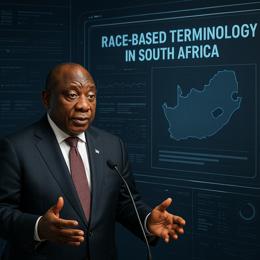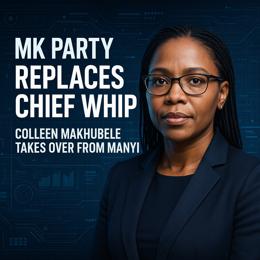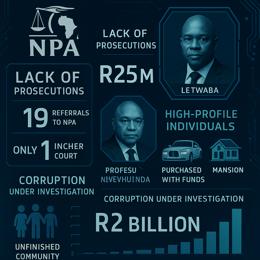Image created by AI
Political Stalemate as Roman Cabanac Refuses to Resign
The political corridors of South Africa’s Department of Agriculture are currently echoing with the sounds of a contentious standoff. Agriculture Minister John Steenhuisen finds himself in a quagmire due to Roman Cabanac's refusal to step down from his post as chief of staff. Despite nearly two weeks of persuasion for his resignation, the alt-right podcaster and controversial figure keeps his position, employing a strategy that takes advantage of the traditionally slow governmental response to such issues.
Cabanac's resistance has morphed into a full-blown public scandal, posing a dilemma for Steenhuisen, who is wrestling with this very public predicament and the bubble of internal discontent that accompanies it. Not only is the impasse a distraction from the department's fundamental duties, but it is also a struggle against the ticking clock of salary payments and accompanying benefits, as Cabanac retains his title and appears to fully partake in his role, as visible on his bio.
The debate over Cabanac's appointment organically intertwined with discussions on qualifications and disclosure practices. Questions about his law degree and past employment history have emerged, amplifying the scrutiny and advancing debates on the ethical framework for governmental hiring practices.
Despite Steenhuisen's admission of the imperfect nature of the hiring process and assuring his decision to direct Cabanac’s departure, the latter remains steadfast. Revelations that Steenhuisen did not frequent Cabanac's platforms prior to his appointment raise queries about the thoroughness of Steenhuisen's selection and the influences that might have steered this appointment.
Internal voices within the ruling party are beginning to express disillusionment, pointing out that investments made in developing suitable candidates for such positions through the DA's leadership program appear sidestepped. Labour law specialists affirm the complexity of the standoff, indicating that a golden handshake may emerge as a potential, albeit expensive, exit strategy.
As the human resources conversations continue, the public and party insiders await a resolution. The time, cost, and implications of the ordeal continue to mount, leaving open the question of the cohesion within the department and its alignment with the party's proclaimed values. Speculation grows on potential reverberations within the party hierarchy and the processes that allowed such a dilemma to take shape.










